Continue SE across the lawn past the South wall of Avila Center toward the large and conspicuous late to leaf out European white poplar (Populus alba L.) (Fig. 9-1). This introduced tree may also be struggling a bit in our climate, providing good substrate for several lichens.
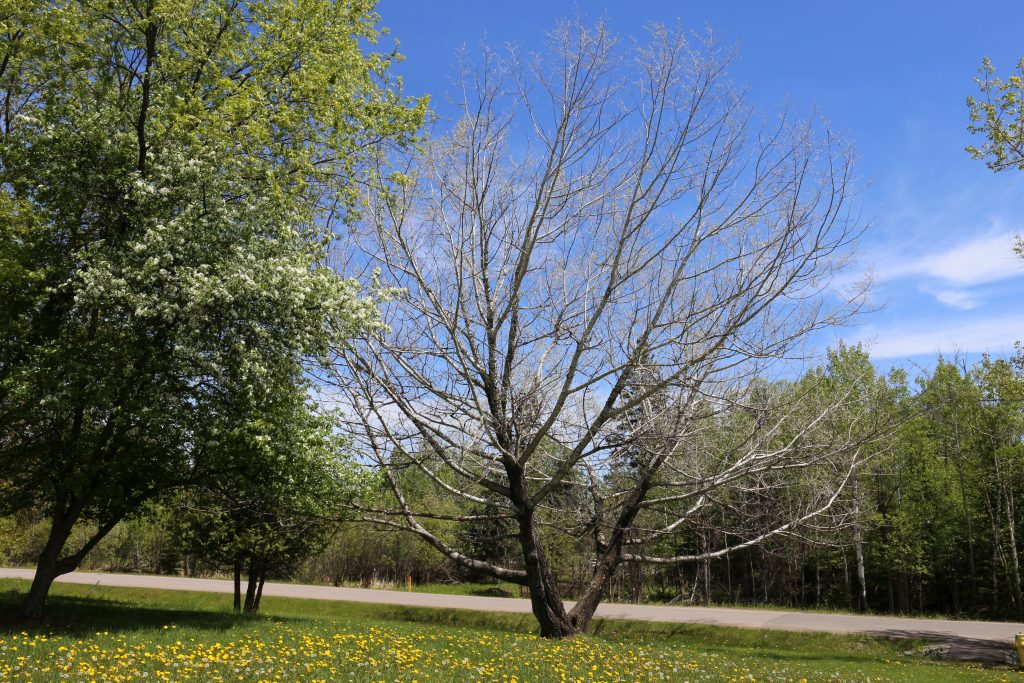
Most striking are the orange colonies, these are not the rock inhabiting Rusavskia, but Xanthomendoza species which prefer bark and have more finely divided lobes. Two Xanthomendozas are present: one with apothecia is X. hassiana (Fig. 9-2, blue pin) and the one covered in fuzzy soredia is X. fallax (Fig 9-3 yellow pin).
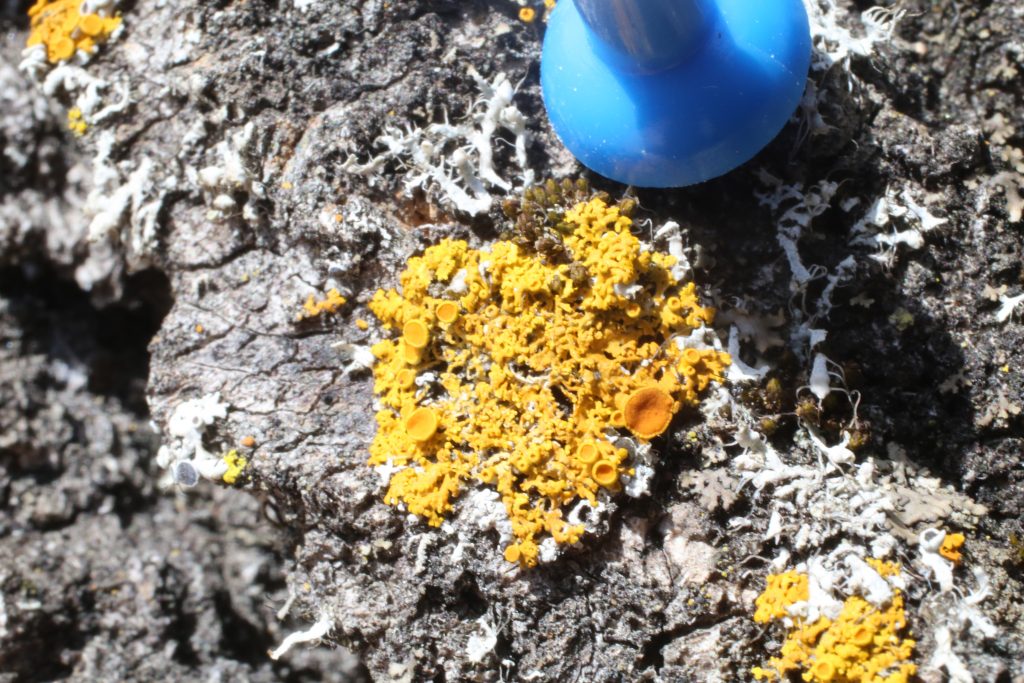
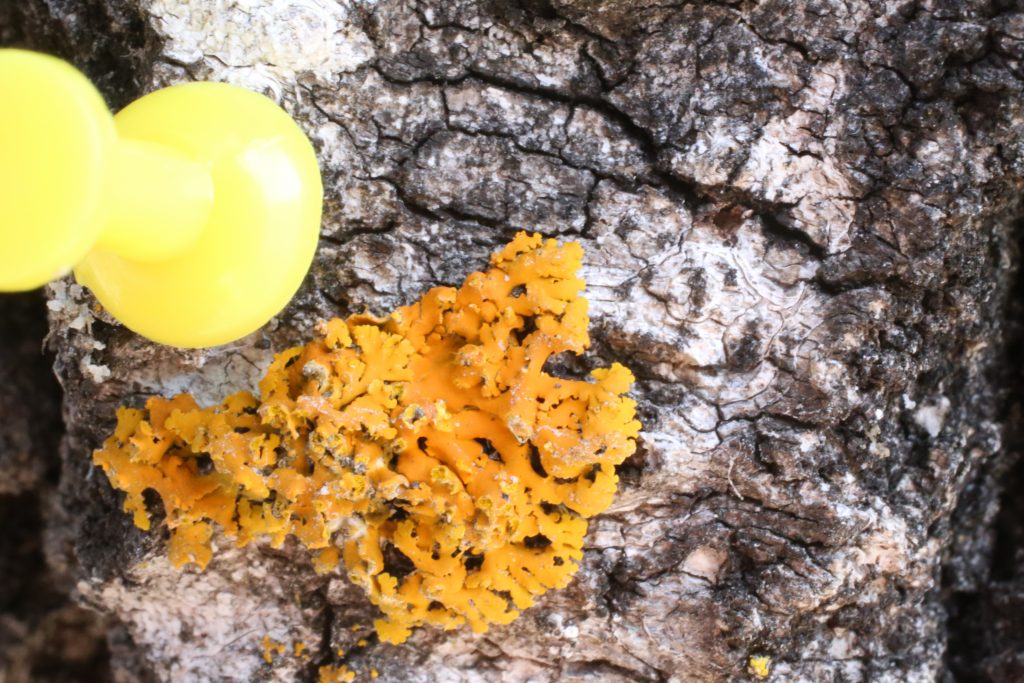
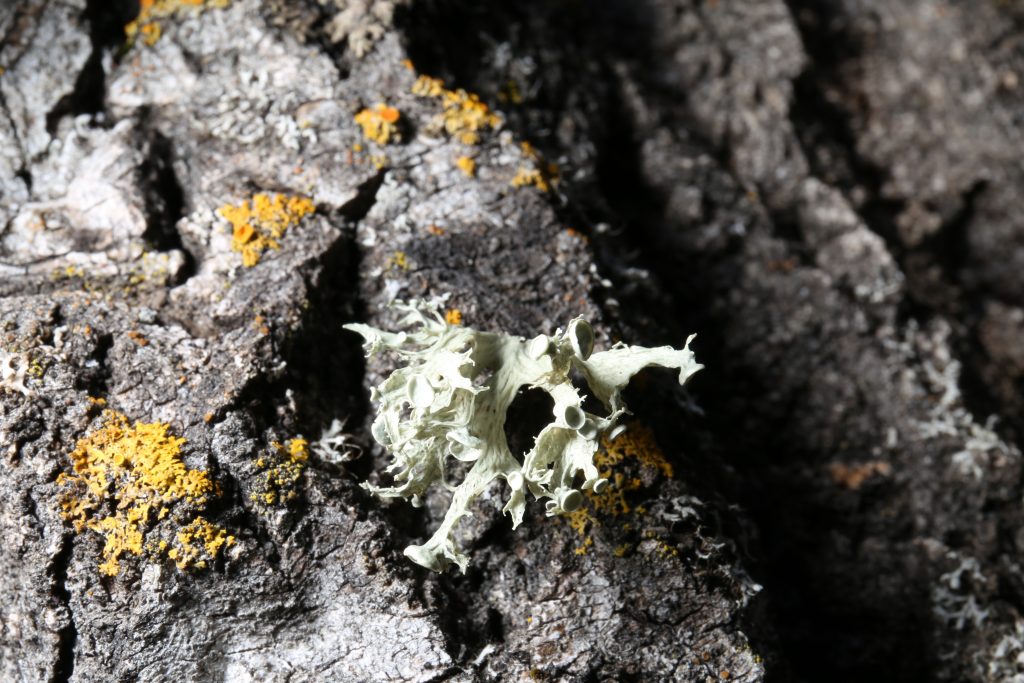
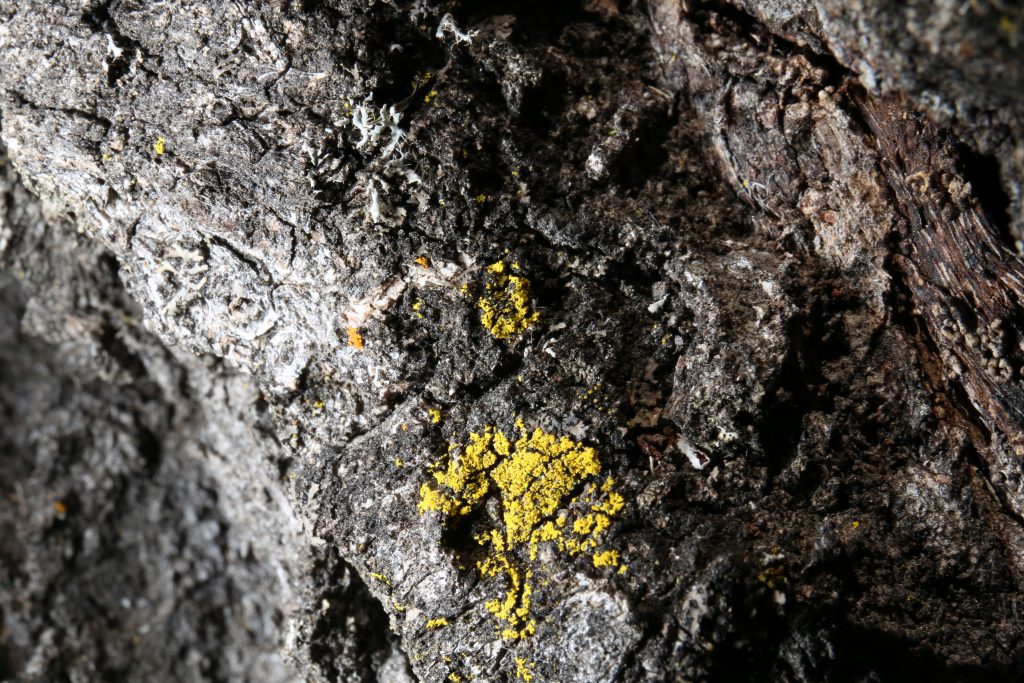
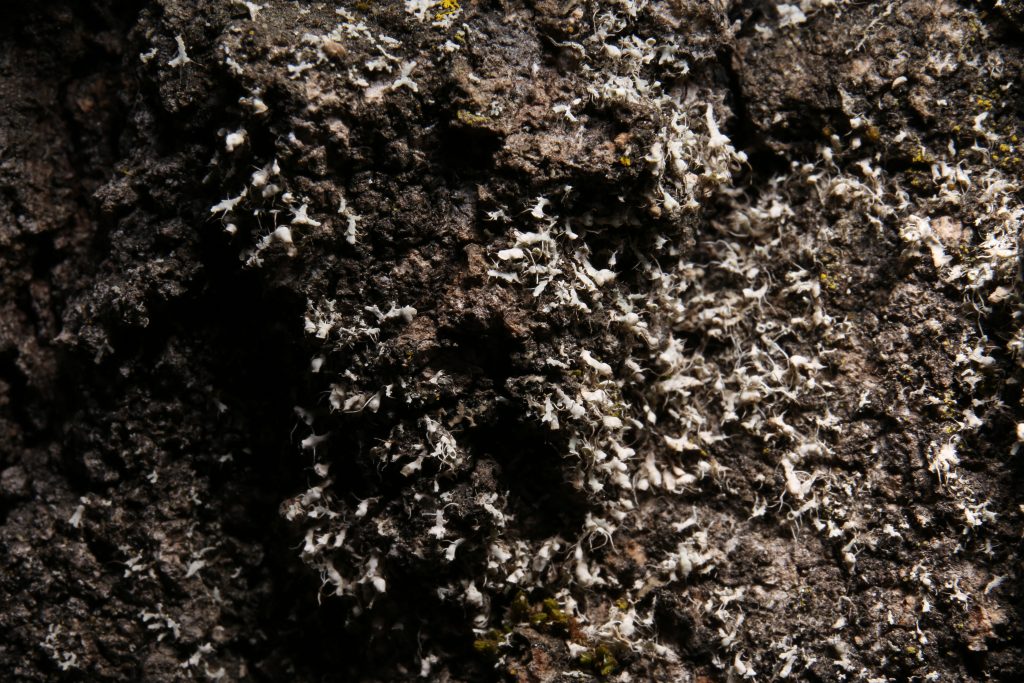
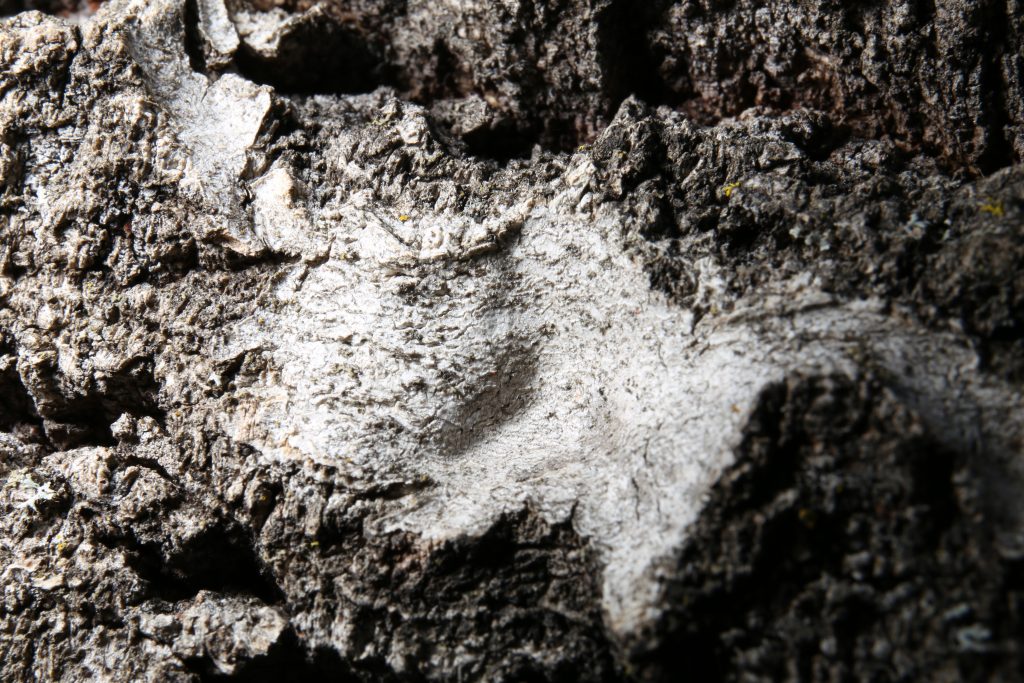
To continue the walk, turn left on the paved road (later paved path blocked to vehicles - Fig. 9-8) and up the hill back to the main campus.
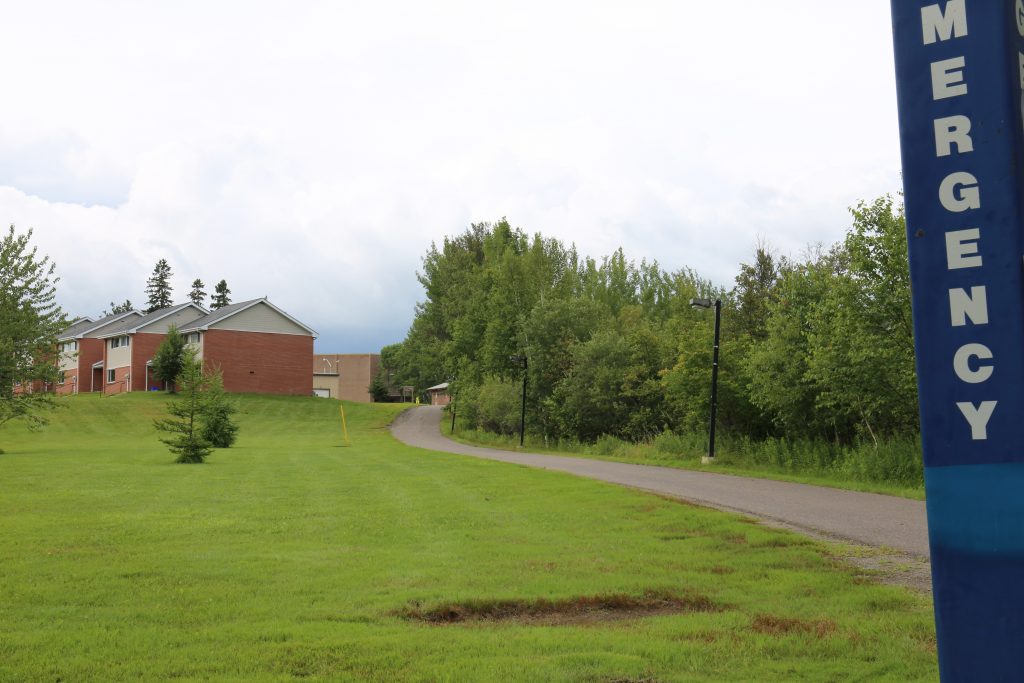
On campus turn left in front of the library, toward Agora Circle, the bus stops and main campus entrance. Opposite the sign for "Security" is the main (SW) entrance to the Braun Building, enter the Braun Building.